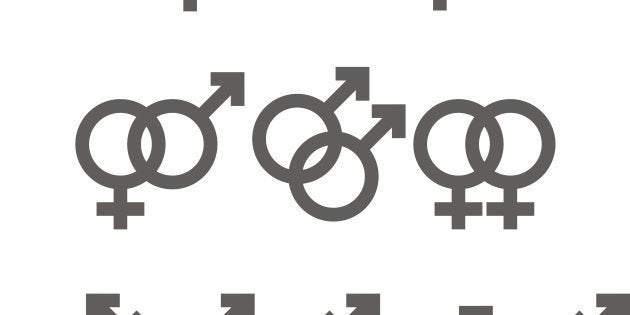
Newly-crowned Miss Mamelodi Sundowns 2017 and former Miss SA 2016 finalist Sharon-Rose Khumalo publicly revealed on Wednesday that she is intersex. It is a word that was also used to describe Olympic gold medalist Caster Semenya, who had to undergo sex tests to prove that she was a woman so that she could compete in track events for women.
Intersex as a term refers to people who are born with "a reproductive or sexual anatomy that doesn't seem to fit the typical definitions of female or male" – that may mean being born with typically female genitalia, but having typically male reproductive anatomy inside, but also refers to their hormonal and chromosomal make up. In some cases, the intersex diagnosis can be made at birth, where babies are born with genitals that are "in between the usual male and female types". In these cases, parents and doctors may decide to designate a sex to the baby at birth and perform the necessary medical procedures to give the child typically either male or female genitalia and thereby also assign them a gender.
But this is where things can start to get confusing. To clarify it as much as possible, the first distinction that we must draw is between gender and sex.
Gender
Gender refers to the "socially constructed characteristics of women and men – such as norms, roles and relationships of and between groups of women and men". This means the roles and social norms that we have come to construct around what it means to be masculine or feminine in society. Gender defines social and legal status as girls and boys, women and men. Gender identity is how each individual relates their innermost feelings about their gender with the social constructs that surround them.
Sex
Sex – or "biological sex" – refers to anatomy. It includes our internal and external sex organs, chromosomes, and hormones. That is, having a penis and testicles, vagina, uterus, ovaries or more oestrogen or testosterone. If these physical traits fall within typical definition of male or female (having a vagina and uterus and ovaries, for example), people are then classified as male or female.
Once these concepts are understood, it becomes a bit easier to draw further distinctions. Like the difference between being intersex and being transgender. It is important to note that gender and sex are not interchangeable terms, and that they have different meanings.
Intersex
This is the definition for people born with physical sexual or reproductive qualities (which include chromosomes and hormones) that do not fit into the binary male/female distinctions. In intersex cases, the biological sex of a person is ambiguous.
Transgender
Being transgender means that there is a mismatch between the sex you were assigned at birth and your gender identity. For example, in the case of transgender women – they would have been assigned as male when they were born for displaying the physiological characteristics that are typically male, but may identify as female in terms of how they see themselves within the social constructs of the world.
It is possible to be both intersex and transgender, but they are not the same thing. Intersex relates to a physiological designation – which sex a person is assigned based on the physiological traits they display – while being transgender is about how someone expresses their gender identity.
To learn more about the LGBTQI+ community, visit the South African Gay & Lesbian Alliance Against Defamation (GLAAD)'s Facebook page or the Transgender and Intersex Africa website.
